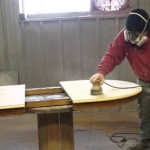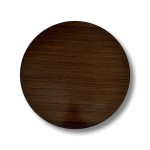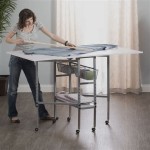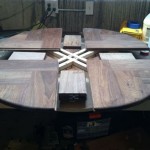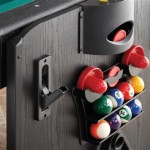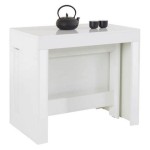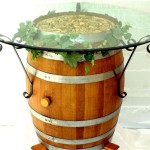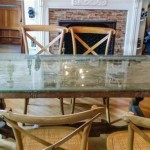Essential Aspects to Consider When Choosing Glass Tops for Tables
Glass tops for tables have become increasingly popular due to their aesthetic appeal, durability, and ease of maintenance. However, selecting the right glass top for your table requires careful consideration of several essential aspects.
Type of Glass
There are primarily three types of glass used for tabletops: annealed glass, tempered glass, and laminated glass. Annealed glass is the most common and affordable option but is also the most prone to breakage. Tempered glass is four times stronger than annealed glass and is less likely to shatter into sharp fragments when broken. Laminated glass is the safest option as it consists of two layers of glass with a thin layer of plastic in between, preventing shattering and creating a more durable surface.
Thickness
The thickness of the glass top is a crucial factor that influences its durability and strength. Thicker glass tops are more resistant to scratches, dents, and heat damage. For most tables, a thickness of 10-12mm is generally recommended, but heavier or larger tables may require thicker glass for optimal support.
Edge Type
The edge of the glass top can significantly affect its overall appearance and functionality. There are various edge types to choose from, including flat polished, bevelled, ogee, and mitred. Flat polished edges offer a sleek and modern look, while bevelled edges add a touch of sophistication. Ogee edges are decorative and can create a more traditional aesthetic, and mitred edges provide a seamless transition between the glass and table base.
Shape
Glass tops can be cut to various shapes to complement the design of your table. Common shapes include round, square, rectangular, and oval. The shape of the glass top should complement the shape and size of the table base, creating a balanced and visually appealing combination.
Additional Features
Some glass tops may come with additional features, such as a frosted or tinted finish. Frosted glass provides privacy and can obscure the view of objects beneath the table. Tinted glass can reduce glare and create a more muted or sophisticated look. Additionally, some glass tops may feature decorative etching or patterns to enhance their aesthetic appeal.
Conclusion
Choosing the right glass top for your table involves carefully considering essential aspects such as the type of glass, thickness, edge type, shape, and any additional features. By selecting the appropriate glass top, you can not only enhance the appearance of your table but also increase its durability and functionality. With proper care and maintenance, a glass top can provide years of beauty and enjoyment.

Rainbow Glass And Mirror
Glass Table Tops Fairfax County Abc Mirror

Glass Table Tops Furniture Shelves In Aiken Sc

Copeland Furniture Natural Hardwood From Vermont Exeter Round Glass Top Tables In Cherry

Benefits Of A Glass Table Top New Concepts Design

Glass Table Top Thinkglass Heat Resistant

Saloom Furniture Serpent Dining Table Glass Top 2modern

Homy Casa Slip 55 In Rectangular Clear Tempered Glass Top Gold Base Elegant Dining Table Seat 6 Leg 140 The Home Depot

Homy Casa 47 In Tempered Glass Top Slip Black Base Elegant Dining Table Leg 120 The Home Depot

Custom Glass Tabletop Beveled Flat Polished Seamed Edge

